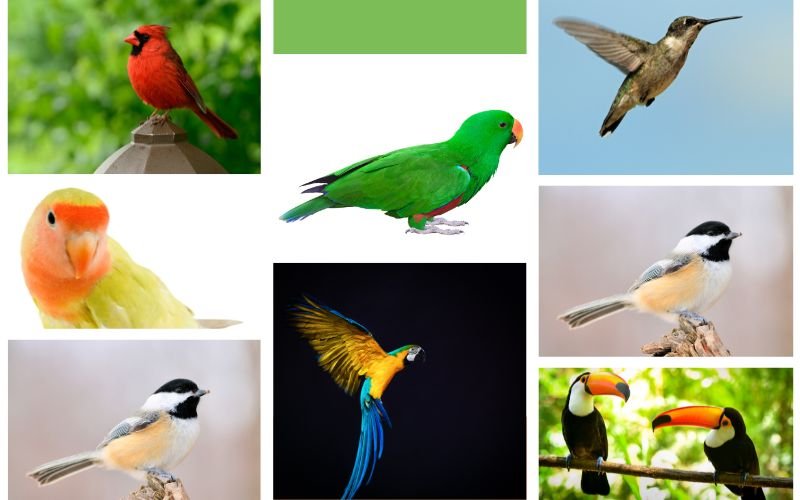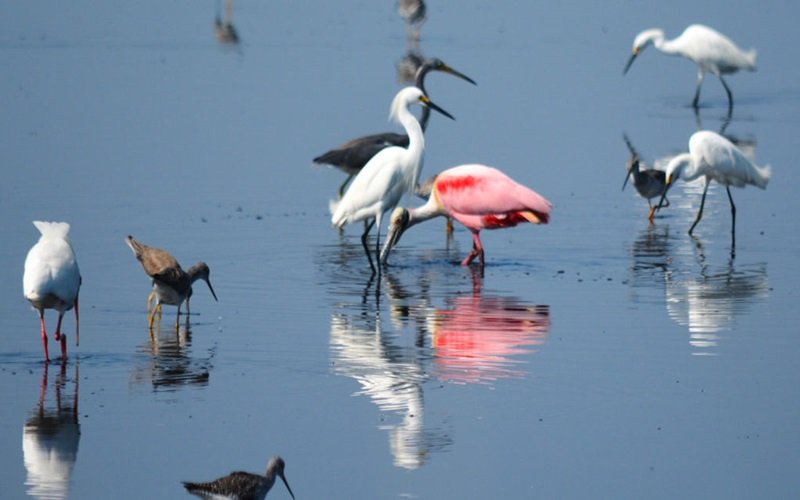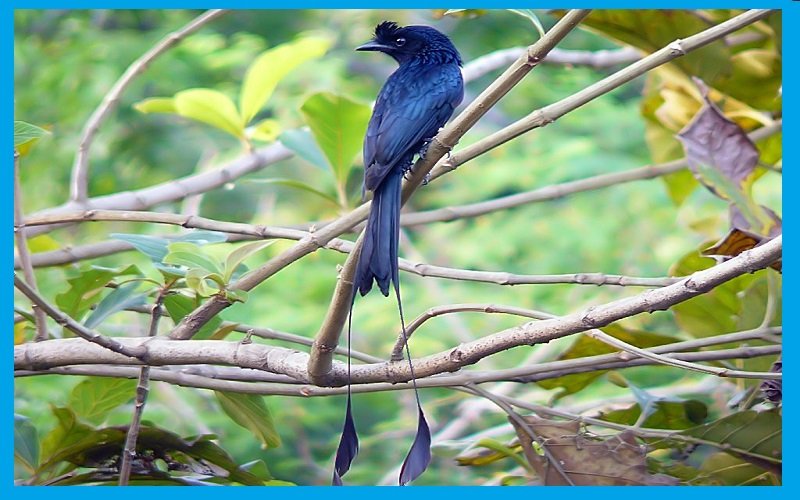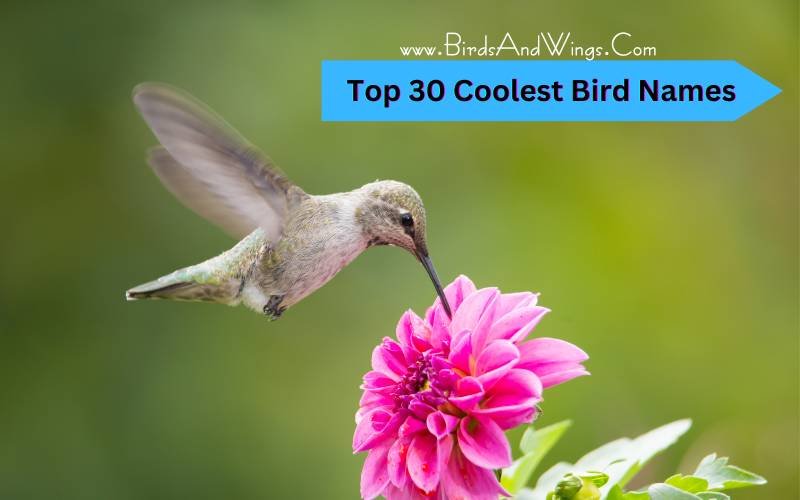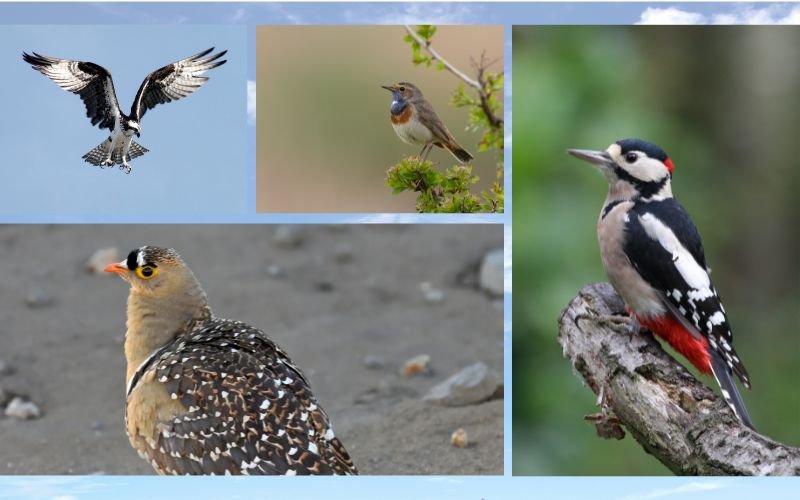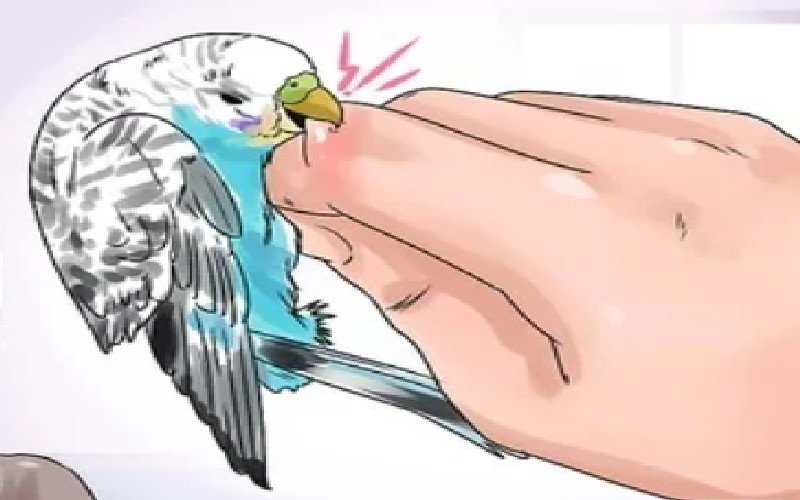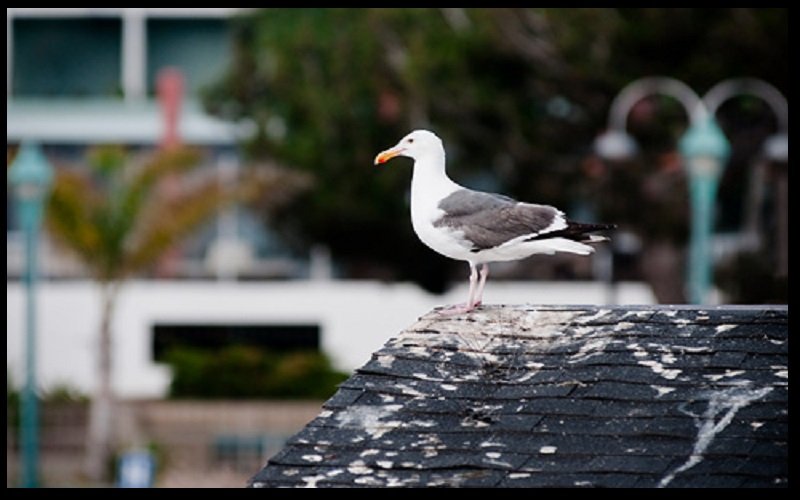Birds with unique names hold their diverse characteristics through their names. Every species’ name has a special meaning that represents its characteristics behavior or features.
This article is going to discuss the 21 birds’ names that start with a “U” letter. By exploring those birds, we try to provide all the species’ scientific names, their lifespan, native places, sizes, diets, and other facts and attributes about them.
Top 25 Birds That Start With U
Every bird has some unique name that fascinates humans and bird watchers. Their names certify their few characteristics within it.
In this section, we are going to mention every bird’s scientific name, lifespan, native place, size, and food habits.
Besides their other information like distribution, habitats,bl breeding behaviors, nesting and courtship rituals and other attributes in nature.
Bird 1: Ultramarine Flycatcher

- Scientific name: Ficedula superciliaris
- Lifespan: not found
- Native to: Western Himalayas and Southern India
- Size: around 10 cm
- Food or Diet: primary diet: insects
Ultramarine flycatcher birds are small birds related to the old world flycatcher family. These birds are mostly found in the Southern India and Himalayas, Jammu and kashmir, Uttarakhand, Nepal and Bhutan.
During their breeding season these birds can fly up to 2700 meters to 3200 meters over the lower hills like Meghalaya, Nagaland, khaki and Cachar hills.
In winter, these birds migrate to Southern parts of India, including Delhi, Maharashtra, Goa, and Odisha, for open habitats with mixed forest areas like oak, pine fir trees, low trees, and bushes for their habitats.
Their nesting period starts from the middle of April to early July. They made their nests with structure moss with some strips of bark and grass on high trees or cliffs about 7 meters high from the ground level.
Bird 2 : Ultramarine Grosbeak

- Scientific name: Cyanoloxia brissonii
- Lifespan: not found
- Native to: South America
- Size: 15 cm
- Food or Diet: seeds, fruits, and insects
Ultramarine grosbeak is another bird with similar subspecies of grosbeak family. These birds are widely distributed in Central South America and Northern South America.
They are fond of semi-open habitats, open areas, gardens, and urban and suburban places for their habitats. Adult male bird’s full body is covered with glossy dark blue plumage with blue beaks.
Females have chestnut brown plumage. Their favorite habitats are secondary forests, plantations, and swamps in northeast and Central Brazil, Bolivia, Paraguay, and Argentina.
Their breeding season starts in between September and February. Female birds build their nests which are not very far from the ground level.
These Ultramarine grosbeak birds are not flock birds which means they do not form a group or community to stay together. They like to stay in their territory.
If any Birds or intruders break their territory, they get violent and show aggressive behavior toward those birds or intruders.
Bird 3: Unicolored Blackbird

- Scientific name: Agelasticus cyanopus
- Lifespan: not found
- Native to: South America
- Size: 18 to 21 cm
- Food or Diet: seeds, grains, fruits, berries, etc.
The unicolor blackbird is a similar subspecies of the Icteridae bird family. The adult male has glossy black plumage and dark eyes with dark legs and beaks.
Adult females have a mixture of brown and black plumage. These species are mostly native to South America along with northern Bolivia, southern Brazil, northern Argentina and Paraguay.
They mostly prefer marshes, ponds, lakes, and grasslands for their habitats. They can fly up to 600 meters about 2000 feet above the ground spotted in Brazil.
These species love to stay in pairs with their partners and are found in swampy habitats. These blackbirds can not stay far from water; they always stay near auto lakes and marshes.
Bird 4: Uniform Swiftlet

- Scientific name: Aerodramus vanikorensis
- Lifespan: not found
- Native to: Philippines, New Guinea, Australia
- Size: around 13 cm long
- Food or Diet: insects especially ants
Uniform swiftlet, also known as Vanikoro swiftlet or lowland swiftlet which is a small to medium size bird with gray brown plumage.
Their lower body parts are darker than the upper body parts, especially on the chin and throat. They are broadly distributed in the Philippines city, New Guinea, and Melanesia.
These species prefer lowlands forests and open areas for their habitats. They make their nests in caves, sinkholes, or in the limestone areas.
Their nests are usually 10 meters long, sometimes even bigger. Sometimes, they even use man-made structures like tunnels or artificially structured nests for nesting.
Females lay one or two eggs in the nests and incubate for around 12 days. After the egg hatches, the young leave their nests within 35 days.
Bird 5: Unspoiled Saw-Whet Owl

- Scientific name: Aegolius ridgwayi
- Lifespan: not found
- Native to: Central Costa Rica, Mexico, Guatemala, Panama
- Size: 18-21.5 cm
- Food or Diet: small shrews, rodents, small birds and bats
Unspotted saw-whet owl birds generally belong to the typical Owl family. Their lower parts, throats, and upper breast are brown, and the lower breast and belly are plain cinnamon buff along with darker brown tails.
Their facial structure is mostly a disk type with a narrow white border. They are familiar with Costa Rica, western Panama, and Mexico. They like to live in oak forests, cloud forests, and pine-oak forests.
Their breeding seasons start from March and July. They build their nests in cavities, sometimes their nests are also made by woodpeckers. During their breeding seasons they like to be in their territories.
Although their diet is not fully specific, however, their prime diet is shrews and rodents. They also eat small birds or bats.
Bird 6: Upland Buzzard

- Scientific name: Buteo hemilasius
- Lifespan: around 12 to 18 years
- Native to: Asia (central, South and north)
- Size: 52 to 72 cm
- Food or Diet: small mammals, ground squirrels, gerbils, pikas, etc.
Upland Buzzards are large birds of prey, similar to eagles, hawks, and kites birds, which are also similar species of the Accipitridae family.
These species are familiar in Central Asia, south Asia, and East Asia, including China, Mongolia, Bhutan, Tibet, Nepal, and Bhutan region. These Buzzard birds are mostly migratory birds but cover decent or average distances for migration in winter.
They do not cover long distances during their migration periods. These birds are generally found in open areas and high-elevation regions with high altitudes of about 16,000 feet above the ground.
These species generally breed from April to August and lay eggs in May. They build mostly in outcrops or the edges of cliffs. They build their nests with sticks, dry dung, wool, and grass.
Female buzzards lay 2-4 eggs in the nests and incubate for 36 to 38 days.
Bird 7: Upland Goose

- Scientific name: Chloephaga picta
- Lifespan: not found
- Native to: Southern America
- Size: 60 to 72.5 cm
- Food or Diet: seeds, leaves, other plants, cattle, sheep
The upland Goose is also known as the Magellan Goose, which is a duck bird, a subspecies of the Anatidae family. Males have white heads and breasts along with black legs.
Females have reddish-brown heads and breasts with orange-yellow legs. These geese are mostly found in South American continents, including central Chile and Argentina. These species prefer grasslands, arid lowlands, crop fields, and green grass areas for their habitats.
They tend to molt between November and January. Their successful breeding process shapes their molting process. If their breeding process somehow fails, then their molting process also fails.
During their breeding season, male birds perform courtship rituals by performing loud whistles, whereas female birds give responses with soft crackles.
If others try to enter their territory these birds become aggressive and violent towards those birds. These fights and their aggressive nature also cause them to face death as well.
Bird 8: Undulated Antpitta

- Scientific name: Grallaria squamigera
- Lifespan: around 3 years
- Native to: Bolivia, Peru, Ecuador, Colombia
- Size: around 20 to 23 cm
- Food or Diet: mostly insects
The undulated antpitta is a small bird with speckled breasts of orange and black. Their wings are olive-brown and have black beaks. These species are familiar in Bolivia, Peru, Ecuador, Colombia, and Venezuela m.
They mostly prefer subtropical, tropical forests along with woodlands and wooded areas for their habitats.
Their diet contains mostly insects such as ants, beetles, grasshoppers, flies, and spiders; however, they also prefer fruits, leaves, and berries in different seasons.
Bird 9: Undulated Tinamou

- Scientific name: Crypturellus undulatus
- Lifespan: not found
- Native to: Northern South America
- Size: 28 to 30 cm
- Food or Diet: small fruits, seeds, insects, berries mostly found on the ground
The undulated tinamou is a ground bird that is widely spotted in South America. Their weight is around 300 grams.
They have overall brownish-gray plumage and have a strong neck and whitish throat. Their legs and feet are a mixture of gray, yellow and greenish.
These tinamou birds are widely spotted in Eastern and northern South America, including wooded habitats, dry forests, and open savanna areas like the Amazon Basin.
They build their nests on the grounds where females lay three glossy pink-gray eggs. Female birds incubate for 17 days.
As they are ground birds they eat what they have found on the ground, mostly insects, seeds, berries and fruits.
Bird 10: Ural Owl

- Scientific name: Strix uralensis
- Lifespan: maximum 24 years
- Native to: Central Europe
- Size: around 50 to 64 cm
- Food or Diet: voles, shrews, rodents, birds, frogs, and Insects
Ural owl birds are another subspecies of the owl family and belong to the true owl family. Their full body is a grayish-brown to white pattern.
They are mostly familiar in Central Europe, including Germany, South Austria, western Slovenia, and Poland. These species of owl prefer primary forests with a mixture of deciduous areas.
These birds are territory birds and make their pairs for life-long periods. They do not like to migrate; mostly they stay in captivity for all seasons of the year.
The Ural owl starts their activity at night, just before dawn. They make their nesting sites quite bigger to have successful nesting periods.
Sometimes, they can even attack other birds, which might make them injured.
Bird 11: Usambara Eagle Owl

- Scientific name: ketupa poensis vosseleri
- Lifespan: not found
- Native to: Tanzania and Usambara mountain of East Africa
- Size: 19 inches (490 mm)
- Food or Diet: rodents, insects, Dwarf
Usambara eagle-owl bird, also recognized as the East African duck-eagle owl is the taxon of the owl family. These species are local to East Africa, including the Usambara Mountains, Tanga region, and Nguru Mountains.
They mostly prefer subtropical and tropical places for their habitats. They can fly up to 900 and 1500 (3000ft – 4900 ft) meters above sea level.
Their diet contains rodents, insects, small mammals etc. Their breeding season generally starts from November to February.
They lay two to three eggs in the nests. These species are pointed as threatened birds in order to lose their habitats.
Bird 12: Upland sandpiper

- Scientific name: Bartramia longicauda
- Lifespan: around 13 years
- Native to: Northern Midwest United States
- Size: 30 cm
- Food or Diet: grasshoppers, crickets, beetles, leaf beetles, flies, etc.
The upland sandpiper is a large sandpiper bird that is mostly related to curlew groups. Their body is white and brown stripes with yellow beaks and legs.
These sandpiper birds are mostly local to eastern Alaska, the Rocky Mountains, Oklahoma, and New England. In winter, they are seen in Argentina, Uruguay, and southern Brazil.
These species prefer open areas, tall grasses, and coastal habitats. Sometimes, they are also spotted in airports, blueberry farms, and abandoned strip mines.
Their migration period starts around September to October; at that time, they migrate to Southern Ecuador.
Bird 13: Unicolored Jay

- Scientific name: Aphelocoma unicolor
- Lifespan: not found
- Native to: Central America
- Size: 32 cm
- Food or Diet: nuts, seeds, berries, lichens, flower plants and insects
Unicolored jaybirds are bright blue-colored birds with blue plumage and long tails. These species are familiar in Northeastern, Central America, and Southwestern Mexico, southern Veracruz, and San Luis Potosi.
They prefer highlands such as evergreen areas and pine evergreen forests for their habitats. They sometimes mixed with other species in flocks to search for food.
Their diet contains seeds, flowers, fruits, berries, lichens, and flowering plants. Besides, they also eat insects, small rodents, lizards, etc, for their food diet.
Bird 14: Uniform Tree Hunter

- Scientific name: Thripadectes ignobilis
- Lifespan: not found
- Native to: Colombia and Ecuador
- Size: not found
- Food or Diet: not found
A uniform tree hunter bird’s body is fully covered with brown and reddish plumage, with little orange and brown feathers on the head.
These species are mostly familiar in Colombia and Ecuador and include subtropical areas, tropical areas, moist lowlands, and montane forests for their habitats.
They prefer to mix flock groups for themselves or even in pairs for travel, migration, and food searching.
Bird 15: Ultramarine Lorikeet

- Scientific name: Vini ultramarina
- Lifespan: around 20 to 30 years
- Native to: Marquesas Islands
- Size: around 18 cm
- Food or Diet: nectar, pollen,, flowers and
Ultramarine lorikeets are a similar species to the parrot’s bird family. They are familiar with the Marquesas Islands.
They prefer subtropical habitats, tropical moist lowlands forests, montane forests, and plantations. These species’ biggest predators would be black color. These birds are also losing their habitats for their place and public.
Their nests and survival become tough due to deforestation. That is why these species are highly protective species among other birds.
Bird 16: Unicolored Tapaculo

- Scientific name: Scytalopus unicolor
- Lifespan: not found
- Native to: Peru
- Size: 10.5 cm
- Food or Diet: insects, nuts, berries
Unicolored tapaculo birds with gray and darker plumage over their body. The female birds are also similar with brown parts; more often darker.
Female birds are often yellowish below and in belly areas. The unicolored tapaculo birds are familiar in Peru with dense forests and montane forests. Their diet remains are still disclosed.
The IUCN declared this species threatened because of deforestation and habitat loss.
Bird 17: Upcher’s Warbler

- Scientific name: Hippolais languida
- Lifespan: not found
- Native to: Turkey, Pakistan, Africa, Eritrea, Tanzania
- Size: around 14 to 15 cm
- Food or Diet: insects and other invertebrates
Upcher’s warbler is a medium-sized warbler that is related to the Old World warbler and tree warbler genus. Their body is gray plumage with slightly long beaks.
These spices are mostly common in Pakistan, Turkey, and Pakistan. Later, these birds migrate to Africa, Eritrea, Somalia, and Tanzania. These birds prefer semi-desert habitats and bushy areas for their habitats. Their prime food is invertebrates.
Bird 18: Udzungwa Forest Partridge

- Scientific name: Xenoperdix udzungwensis
- Lifespan: not found
- Native to: Tanzania forests
- Size: around 29 cm
- Food or Diet: beetles, ants and seeds
Udzungwa forest partridge, also known as Udzungwa partridge, is a medium-sized bird with brownish gray lower parts, brownish olive crown, and upper side.
Their beaks are red, eyes are brown and legs are yellow. Both male and female are quite similar in appearance. This species was first discovered in 1999 in Tanzania forests. Their prime food is beetles, ants, and seeds.
Bird 19: Undulated Antshrike

- Scientific name: Frederickena unduliger
- Lifespan: not found
- Native to: Western Amazon, Peru, Brazil, Colombia
- Size: not found
- Food or Diet: not found
Undulated antshrike birds are related to the antbird family. These species are widely separated in the western Amazon, Southeastern Peru, Western Brazil, and Southeastern Colombia.
In 1986 these birds were discovered and given binomial names. These species prefer upland rainforests for their habitats. Males birds are gray and brown; females are orangish black color. These birds forage singly or sometimes in pairs, also in open places.
Bird 20: Unstreaked Tit-Tyrant

- Scientific name: Uromyias agraphia
- Lifespan: not found
- Native to: Peru
- Size: not found
- Food or Diet: not found
Unstreaked tit-tyrant birds are small birds with brownish-gray plumage over the body a black eye and crown and white eyebrows. These birds are mostly familiar in Peru.
These birds prefer subtropical and tropical and moist places for their habitats, such as montane forests. However, their diet has not been specific.
Bird 21: Uluguru Greenbelt

- Scientific name: Arizelocichla neumanni
- Lifespan: not found
- Native to: Tanzania
- Size: not found
- Food or Diet: small fruits
Uluguru Greenbul birds are the similar species of Bulbul family which are the medium size passerine birds. They are mostly familiar in Eastern Tanzania. These birds have dark cap of gray heads, and lower parts of their body and olive green backs.
Conclusion
In conclusion, all these 25 birds are the top birds whose names start with the initial alphabet U. These birds’ unique names, along with their unique characteristics, behaviors, and habitats, help them to survive in nature.
Similarly, lots of birds’ names start with the letter P and other letters. You may explore their unique world by knowing their characteristics and attributes which will surprise and amaze you towards the wonder life of avian species.

